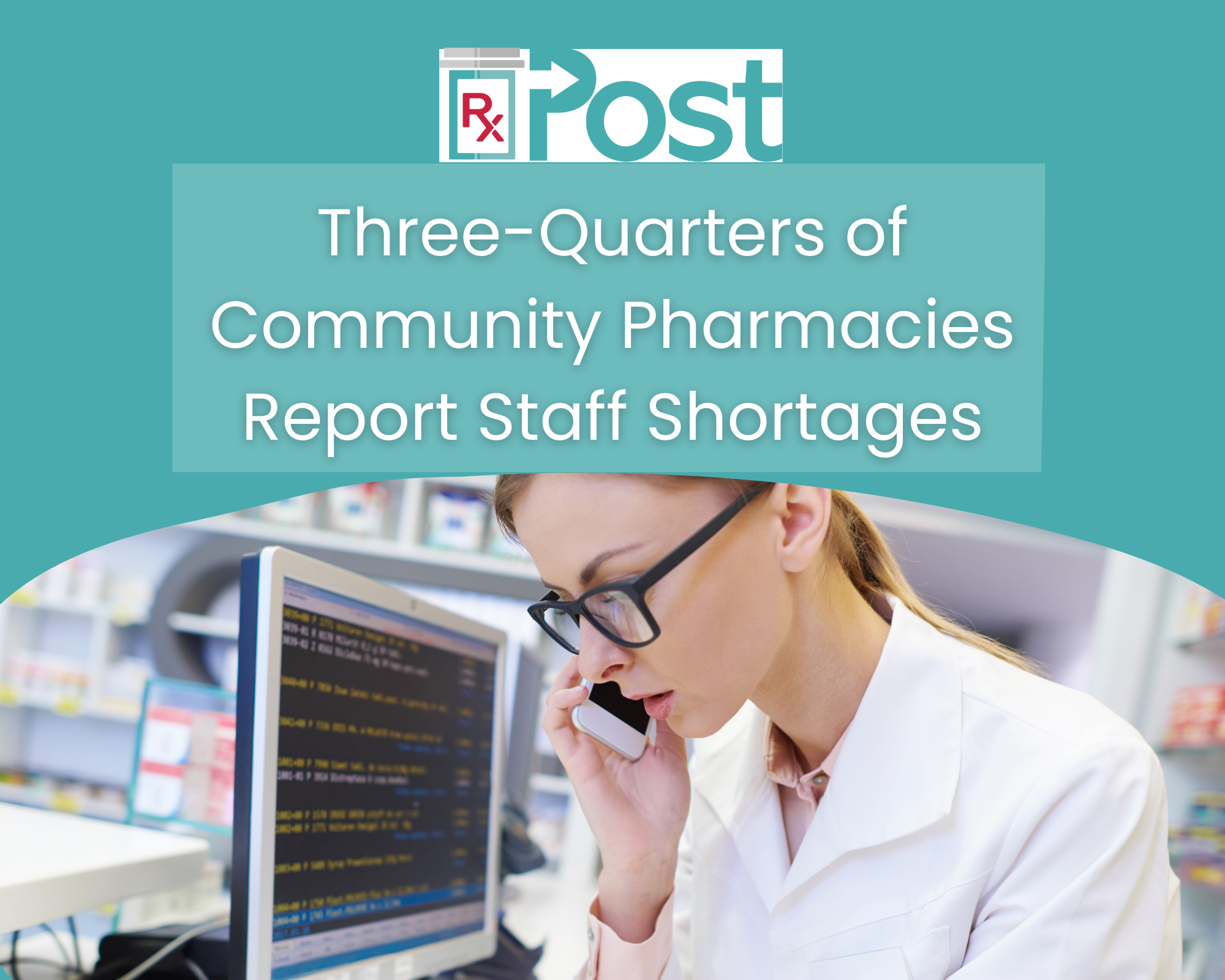Tight labor conditions leading to higher wages, longer wait times, according to the National Community Pharmacists Association
ALEXANDRIA, Va. (Aug. 11, 2022) – More than three-quarters of community pharmacists say they are having a tough time filling open positions, and the result is higher payroll costs and longer wait times for patients seeking to fill prescriptions, according to a new survey released today by the National Community Pharmacists Association.
“Community pharmacies are small businesses, and even though they are affected by the same tough conditions that are battering the rest of Main Street, the biggest threat to their ability to continue to provide health care for consumers — by far — is from the heavy-handed business tactics of insurance-owned PBMs,” said NCPA CEO B. Douglas Hoey, Pharmacist, MBA.
The result on labor conditions is barely changed from similar NCPA surveys last May and last November, when roughly 79 percent and 70 percent of community pharmacists, respectively, said they were struggling to find workers. This year and last year, applicants for pharmacy technician are in short supply. More than 88 percent of respondents this year said finding pharmacy techs was their No. 1 problem, followed by front-end staff at 56 percent.
Roughly 73 percent of respondents say they’re dealing with the labor shortage by offering higher wages and benefits. Fifty-four percent say fewer hands means it’s taking longer to fill patient prescriptions.
“Community pharmacists take pride in their ability to be able to efficiently take care of the consumer’s health care needs, especially compared to some of the big chains. Staffing shortages are making those normally short wait times a little longer. You take the labor shortage, which was acute last year, and add runaway inflation this year, and you have challenging conditions for local, independent pharmacies,” said Hoey.
An overwhelming majority (93 percent) of community pharmacists say inflation is affecting their businesses. Unlike most other small businesses, which can pass on higher costs to consumers in the form of higher prices, pharmacies can’t raise prices on medicines because health insurance companies dictate the pricing.
“The cost of drugs is determined by big insurance companies and their pharmacy benefit managers. They decide how much pharmacies will be reimbursed for the prescriptions they dispense, and how much patients will pay for the drugs. Pharmacy reimbursements for most drugs is going down,” said Hoey. “Between rising costs and diminishing reimbursements, neighborhood pharmacies are really being squeezed.”
Supply shortages that started at the beginning of the COVID-19 pandemic have also persisted, according to the survey. Seventy-nine percent of respondents say they’ve been affected by supply shortages in the last six months. That’s down slightly from a similar survey conducted in April 2020, when almost 90 percent of respondents said they were affected by supply chain issues.
In particularly short supply this year is the drug Adderall, according to the survey. Adderall is commonly used to treat attention deficit hyperactivity. Almost two-thirds of respondents (64 percent) say they’ve had trouble getting the medicine. Despite widespread reports, there does not seem to be a shortage of tampons, at least not in community pharmacies. According to the survey, only 13 percent of respondents report difficulty stocking the product.
“The COVID-19 pandemic may have loosened its grip in many ways, but the economic effects are very persistent,” Hoey said. “Community pharmacies have delivered almost 260 million doses of the vaccines. They are the first line of defense in a public health crisis and in many parts of the country, they are the only line of defense.”
Note: This NCPA survey was conducted from July 25 through Aug. 5. It was sent to approximately 8,000 independent pharmacy owners and managers, with approximately 360 responding.
Article is taken from NCPA News here.


